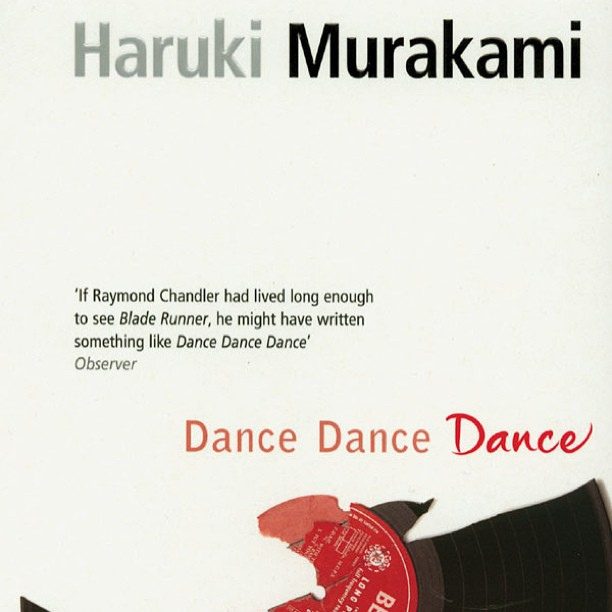
Dance, Dance, Dance is regarded as one of Murakami’s finest works
It’s unanimously agreed that one of the most internationally renowned and famous authors of modern times is Haruki Murakami. Murakami is very much a critics’ author – not that he would ever write for critics – with his books being peppered with literary references that reveal the value he places upon the craft of writing and his own role in recreating and redefining the literature of today. But his skill and subtlety in evoking human emotions, most notably grief, love and isolation, is what makes him so popular with readers and gives his novels a resonance that ensures that they will be read years and years into the future. Murakami’s most famous novel is perhaps the one that really launched his career, the eternally relevant and cool Norwegian Wood, but the book which Murakami claims to have enjoyed writing the most is Dance, Dance, Dance. This novel deserves a lot of attention and I am here to tell you why.
Although Dance, Dance, Dance is actually a sequel (to A Wild Sheep’s Chase) the book itself is certainly capable of standing alone – fitting, considering the way in which Murakami’s protagonists are drawn to solitude. Typically enough, the protagonist retreats at points into complete seclusion from society. But the unnamed lead character cannot sustain this and he draws characters to him and flits from group to group. His fluctuating social situation finds its mirror in the Tokyo of the eighties which, fuelled by the growing force of capitalism, is constantly evolving and changing. And place is of fundamental importance in the novel; in particular the Dolphin Hotel. The protagonist discovers that the grimy, seedy Dolphin Hotel of his memory is no more. While it is technically the same Dolphin Hotel, at the same address it has been completely renovated and taken over by corporate Japan. This is a reference to the changing Japanese society and the unreality which Murakami believes that materialism and capitalism give to our experience of the world and leads on from the questioning of Japanese post-war identity which A Wild Sheep’s Chase embarks on.
But the Dolphin Hotel holds much more relevance with the plot and its themes than this. The fact that the Dolphin Hotel on one level accords with the protagonist’s memory and radically doesn’t on another is an exploration of the static nature of memory; while the place has changed, the protagonist will still measure it up against the hotel of his memory. However, did the Dolphin Hotel ever exist as the protagonist remembers it? The centrality of memory within the plot is therefore very interesting; memory is not reality but a derivation of a past reality, tempered by unreliable human brains. This fits in with the novel’s contemplation of reality; the protagonist is caught up in a net of interweaving and intersecting realities as not just memories but dreams are interwoven with the prophetic visions of the fantastic Yuki, a similar lost soul who becomes something of a daughter figure to the protagonist.
On that point, Yuki is one of a host of eccentric characters who not only continue the surrealist nature of the novel but really demonstrate Murakami’s skill as a craftsman. The perturbing Sheep Man who haunts the protagonist’s dreams, the one-armed American poet that serves as a vestige of Japan’s military history, the grumpy but glorious Yuki, the ex-lover with the entrancing ears…it’s too good to make up but it has been made up, all of it: it’s a creation of the marvellous Murakami. And it is this wide host of characters that allows Murakami to flit between every social class and paint a comprehensive picture of Tokyo and, by extension, the wider world. Murakami seems to wish to illustrate the fundamental truth that humans cannot and should not be defined by their occupation, social class, age…or anything else for that matter. His characters are constantly difficult to define and at times actively defy any previously applied definition – the most obvious example of this being the respectable film star who, later on, reveals a homicidal streak. Furthermore, all of Murakami’s characters suffer from the same problems as the main protagonist; loneliness, being misunderstood, loss. It is clear that to Murakami these three feelings are universal and can afflict anyone, even those who externally seem anything but. However, there is hope; the protagonist escapes these feelings through the love of a person who really does seem to understand him – Miss Yumiyoshi, the receptionist of the Dolphin Hotel.
Murakami is often cited as saying that writing this novel served as a healing process in light of the sudden fame which was a result of Norwegian Wood’s success. I obviously can’t be certain in saying this but perhaps the theme of reality is so well developed because Murakami’s sudden fame and success didn’t feel quite real to him. What is certain is that it’s hard to know necessarily what is happening in Dance, Dance, Dance (even if you have read the prequel!) but this is part of its charm; after all, the reader knows that the novel is not real and this is just about the only concrete line between fiction and reality that the unfailingly enthralling Murakami allows you to make. The book blends mystery, romance and a brand of special surrealism in a way that is truly magical and is a reading experience I doubt I’ll ever be able to replicate. I’d like to end here by saying that if ever things get too much, just dance, dance, dance! (You’ll get the reference when you actually read the book).
